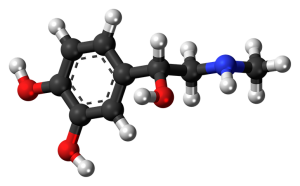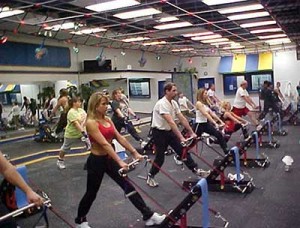The more research that is done, the more we’re learning how seriously important exercise is for health. Serious as a heart attack? Yep, you’ve already heard how working out positively affects the cardiovascular system. However, new studies are prompting us to say serious as cancer, and the effects are extensive as well as extraordinary.
Reports are frequently published, each one touting the benefits of exercise in reducing the risk of one cancer or another. Fox News did us the favor of compiling a list of 13 cancers for which risk was reduced with exercise. Among them were the top three most common cancers: breast, colorectal, and bladder. Fox’s report focuses on working out to avoid developing cancer, but exercise has even shown to be beneficial for people who are already fighting the disease.
Exercising Cancer Patients
When the diagnosis is “cancer,” patients want to do whatever it takes to beat it. What treatments, medications, and protocols will give them the best prognosis for survival? One study showed that mice who spent increased time running saw up to 50 percent reduction in the size of cancerous tumors than mice who weren’t as active. The really good news is that doctors are finding that exercise combats cancer in humans, too. Dr. Lee Jones of the Memorial Sloan-Kettering Cancer Center has long been including workouts as part of the prescription for cancer treatment, and his patients are seeing better survival and fewer instances of recurrence.
How Does Working Out Fight Cancer?
Dr. Marc Siegel, Professor of Medicine at New York University School of Medicine, says that the emotional component to exercise is a huge benefit. No matter what level your health is at, exercising releases hormones that improve your mood and make you feel good which is a plus when you’re trying to recover from cancer. However, Dr. Siegel also points out that working out improves your immune system to help your body fight off the disease. Additionally, exercise regulates insulin, which causes tumors to grow. So, exercising helps fight cancer to by decreasing insulin and strengthening your immune system.

Adrenaline hormones, aka epinephrine, direct NK cells to tumor sites where they attack and kill cancer cells.
Yet, there is an even more specific component to exercising for cancer patients, and that is adrenaline. An article on Science Daily details how the surge of adrenaline that comes from a vigorous workout more effectively transports natural killer cells, known as NK cells. Plus, it doesn’t matter where the tumor is–liver, lungs, skin, or elsewhere–the adrenaline rush will recruit the NK cells and mobilize them to attack the cancerous cells wherever they are.
Exercising to Fight Cancer

High Intensity Interval Training is practically tailor-made for fighting cancer–you get the adrenaline surge of cardio while benefitting from resistance training, all in the same workout.
Even if you’ve been fortunate enough never to have had cancer, you’re likely to know someone who has, so pretty much everyone knows how much radiation treatments and chemotherapy can take out of a person. It’s hard to imagine wanting to engage in a vigorous workout when you’re nauseated and fatigued from treatment. That’s why, though an intense workout is what has been found to be the most beneficial for fighting cancer, each patient has to plan their exercise around what they can do on any given day.
Some of the best exercises for cancer patients are aerobic exercise and strength training. The cardio provides that epinephrine surge that recruits NK cells, and the strength training helps maintain bone density and muscle mass that can suffer during cancer treatment. Combining cardio and strength workouts in High Intensity Interval-Training sessions with the TargitFit Trainer is an ideal way to get both at the same time. Balance exercises and stretching are useful, as well.
Everyone’s health and treatment are different, though, so each workout plan should be customized to the individual patient and approved by his or her doctor. Additionally, it’s important to pay attention to your body and be aware of how your treatments are affecting you. On days when you’re completely fatigued, it’s better to give yourself a break and take a rest day. On the other hand, if the fatigue is light to moderate, you’ll likely feel better after a workout. When you can manage it, even light exercise is better than no exercise at all.
Addition to, Not Replacement for, Cancer Treatment
When doctors learn about this type of research, many of them rush to emphasize that exercise isn’t a substitute for treating cancer. While it’s true you shouldn’t put yourself at risk by foregoing all treatments to spend all your time and energy at the gym, it’s also true that you should do everything you can to improve your chances of recovery and survival. That means not only undergoing chemotherapy or other prescribed medical treatment, but also modifying your diet to include healthier foods, and definitely working out. When it comes to cancer, your life depends on it.

